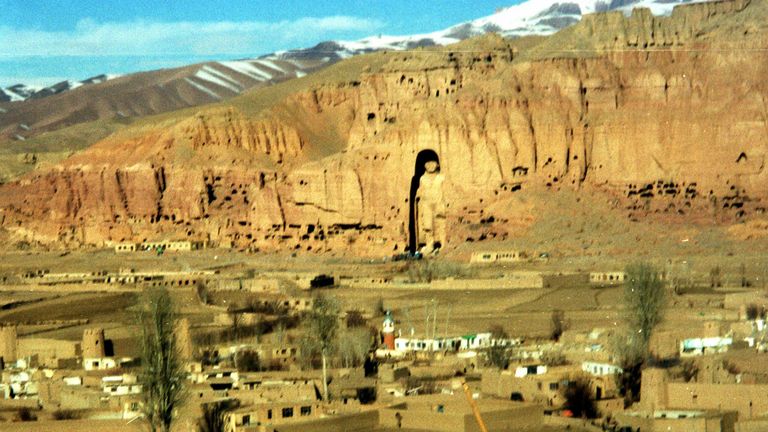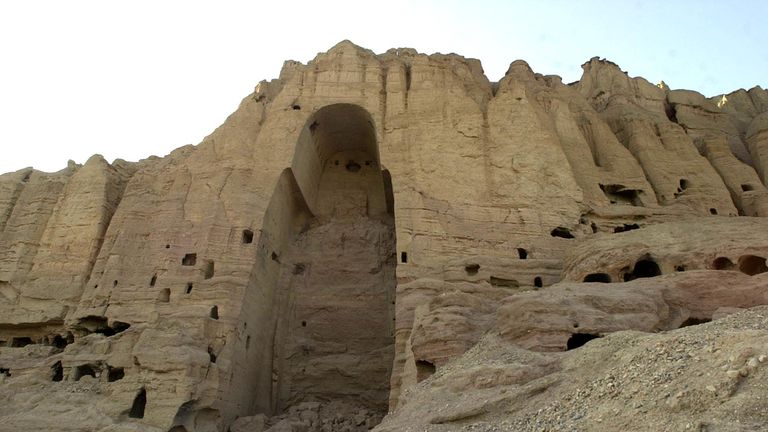Debate over whether Afghanistan's Buddhas should be reconstructed
The two giant Buddhas were loved and revered by locals, but experts are divided as to whether they should be restored.
Wednesday 30 November 2016 14:50, UK
Experts are meeting to discuss whether two ancient statues of Buddha destroyed in Afghanistan in 2001 by the Taliban should be restored.
The monumental antiquities were carved into the cliffs of the Bamiyan Valley in central Afghanistan and had stood watch over the population for centuries.
Now, archaeologists and restorers are considering whether the imposing relics could be reconstructed or whether the remains of the crumbling site should be preserved and left as it is.
The mainly Afghan, German, Japanese and French specialists working in the valley will meet in the German city of Munich for two days while they discuss what options there are.
They say the issue is as much about the local community as it is about the conservation of a UNESCO World Heritage Site.
The 56m (183ft) male Salsal and its female 38m (124ft) Shamama version were considered to be protective silhouettes and locals say they miss them.
Afghan Hakim Safa, 27, who works at the site said: "For us, they were like parents. I feel as though I have lost family."
A professor of archaeology at the University of Bamiyan, Rassoul Chojai, said: "In the villages local people very much want the Buddhas to be rebuilt ... They are always asking us, when will you be ready to begin?"
However, experts say the statues were so thoroughly destroyed it is not even clear if they could ever be rebuilt.
Fragments of the statues, a clutter of rocks and stones of various sizes, have been gathered over the past 15 years, but the bulk of the monuments simply vanished as they were reduced to dust.
The director of the French delegation, Julio Bendezu-Sarmiento, said: "The destruction of the great Buddhas is total."
Islam arrived from the eighth to the 11th centuries in the region, taking over from Buddhism and it was that history that the Taliban wanted to obliterate when the statues were blown up in April 2001.
Mr Julio Bendezu-Sarmiento wonders if it would be worth bothering to try to restore the statues.
He said: "In history so much has disappeared yet we have still kept the memory, the Buddhas will remain in the collective memory even so.
"Leaving aside nostalgia, the urgency is rather to prevent it from happening again."
He pointed to Islamic State's devastation of the Greco-Roman oasis of Palmyra in the Syrian desert last year.
But UNESCO's director of cultural heritage in Kabul, Masanori Nagaoka, said restoration mattered.
He said: "Statues are not just a physical representation ... they have meaning for people, to represent their history and their diversity of culture or in depth respect for religious dialogue.
"So if the reconstruction of the Buddha statues would contribute to revitalising such memories or dignity, this has to be (considered)."
An international conference on the future of the statues will be held in Tokyo next autumn.





